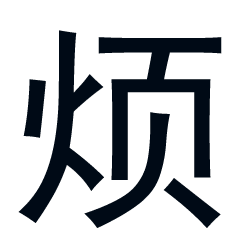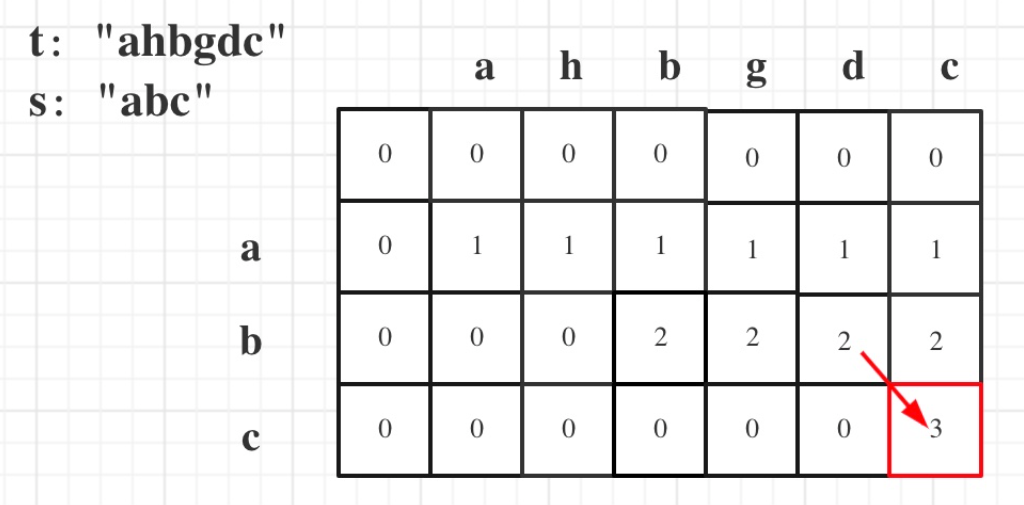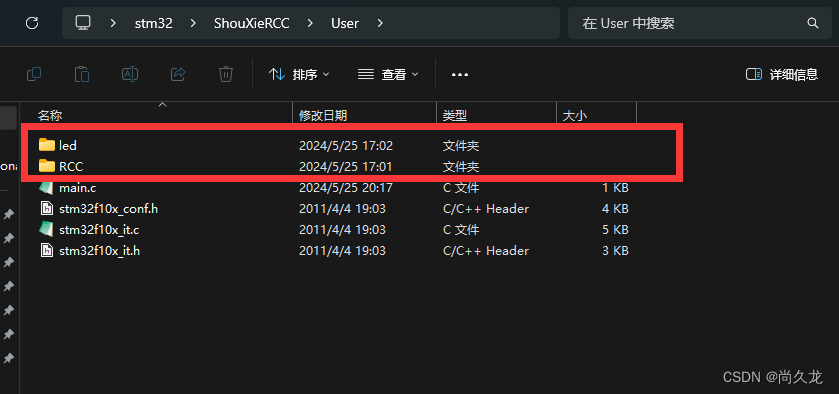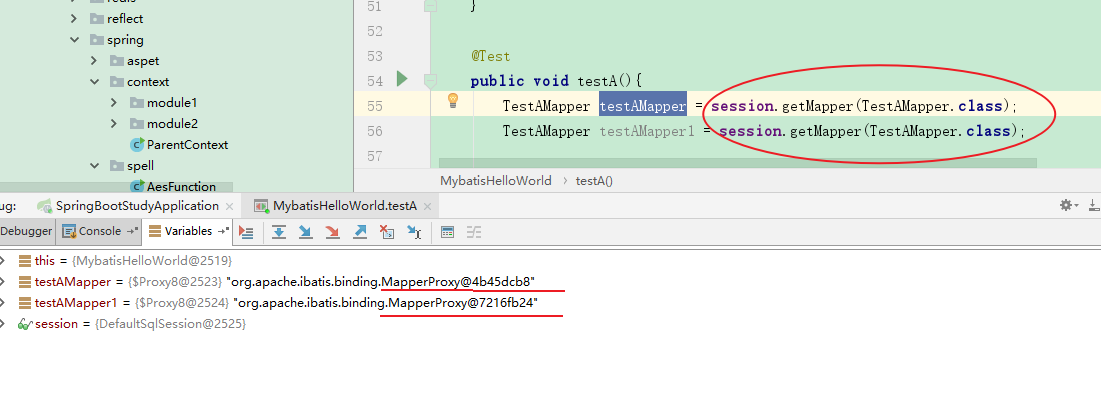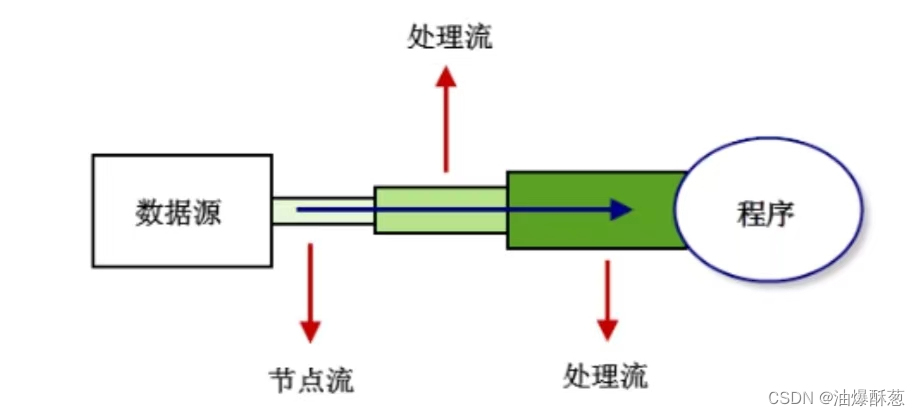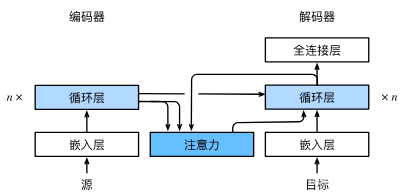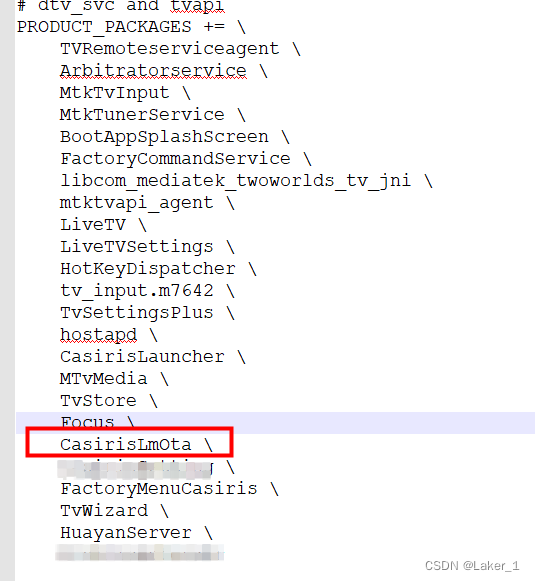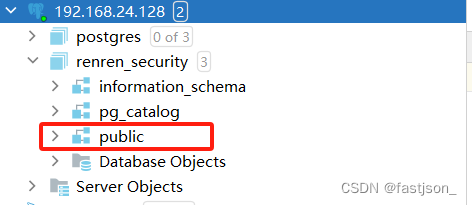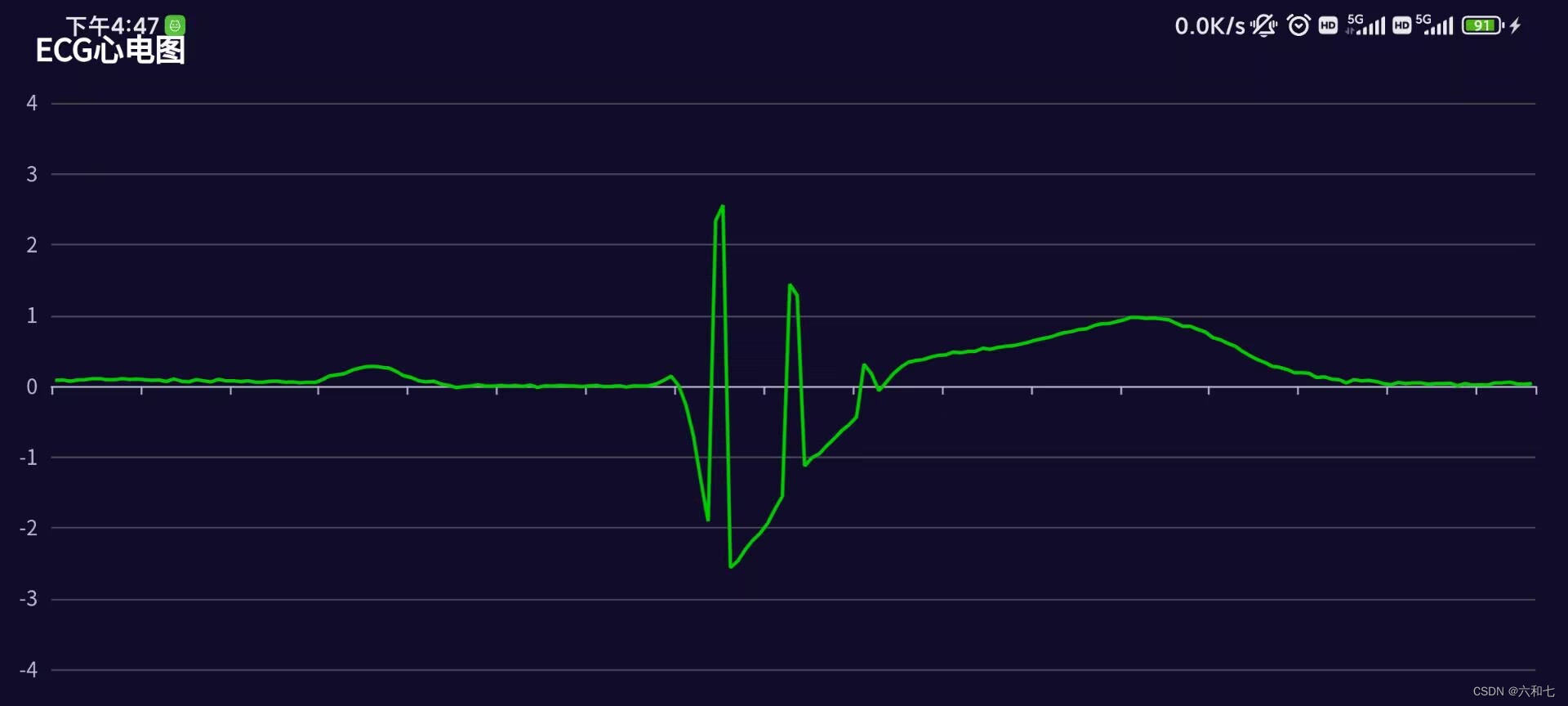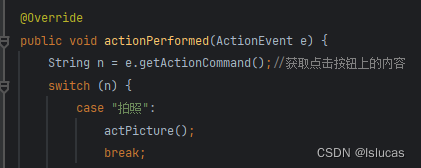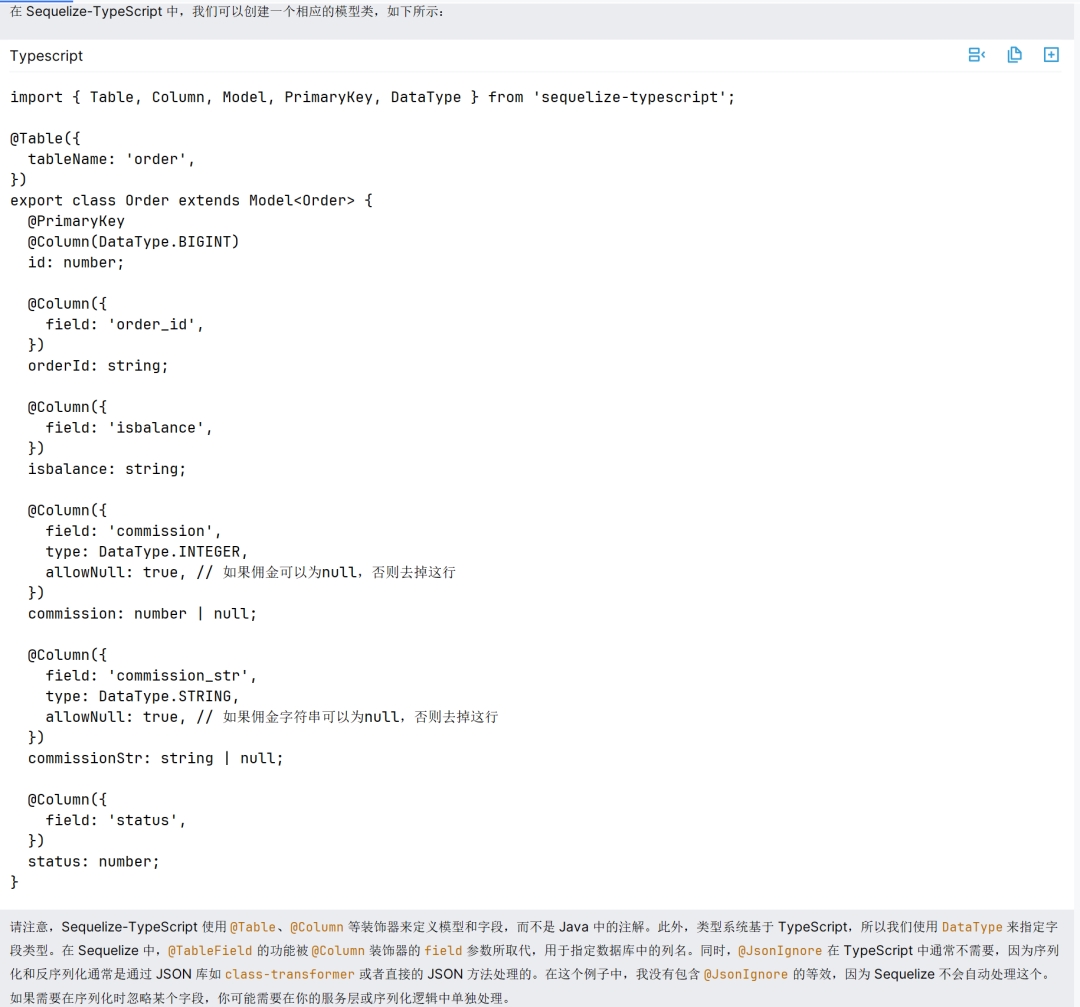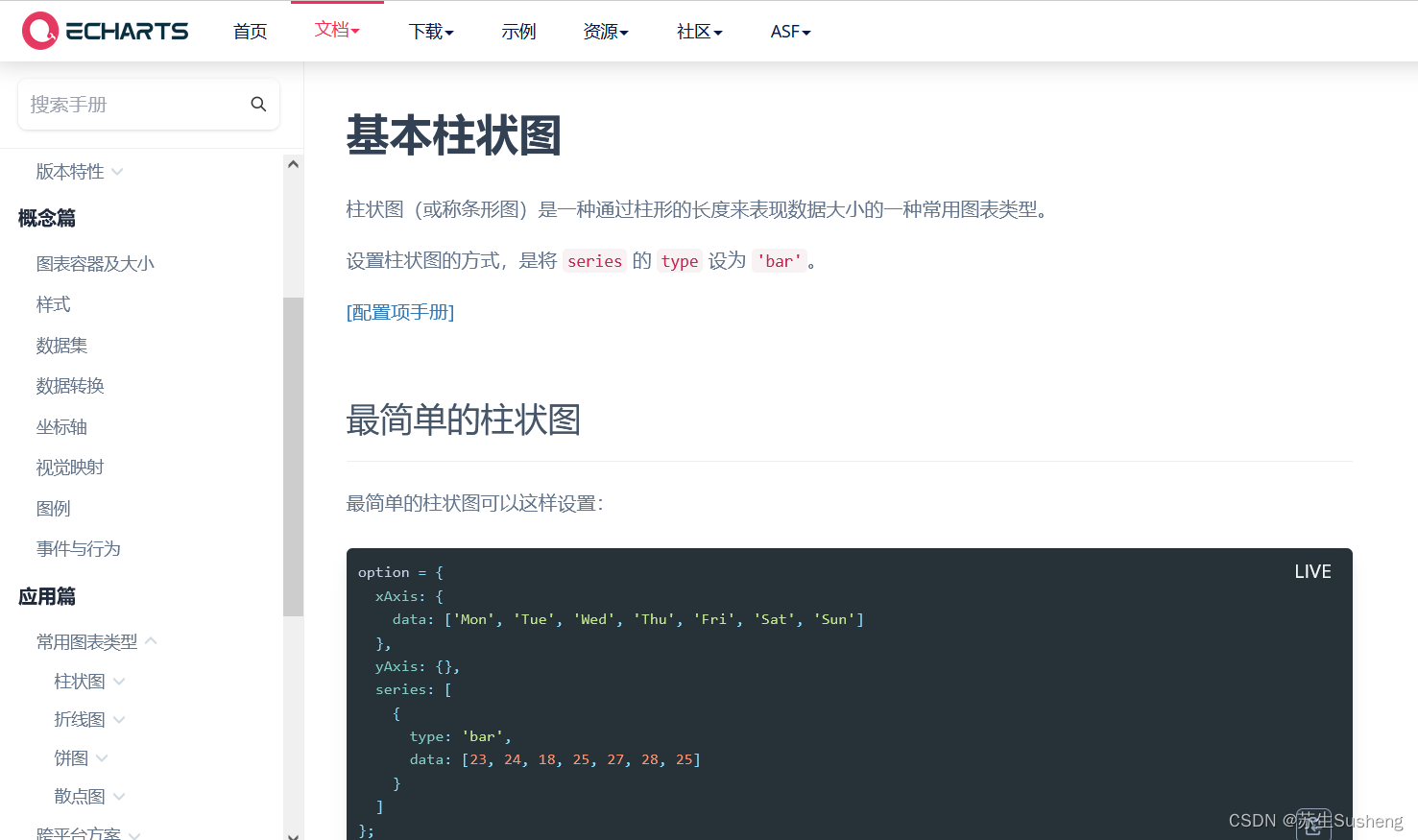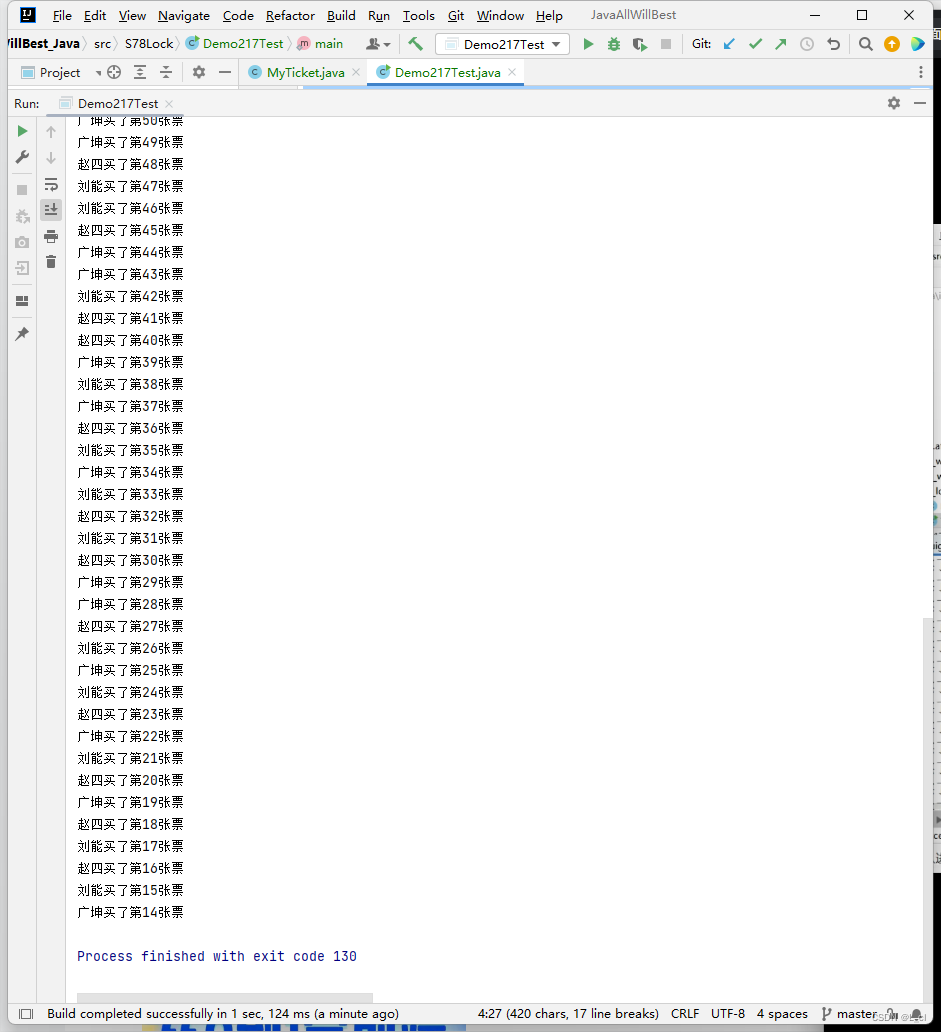最终效果
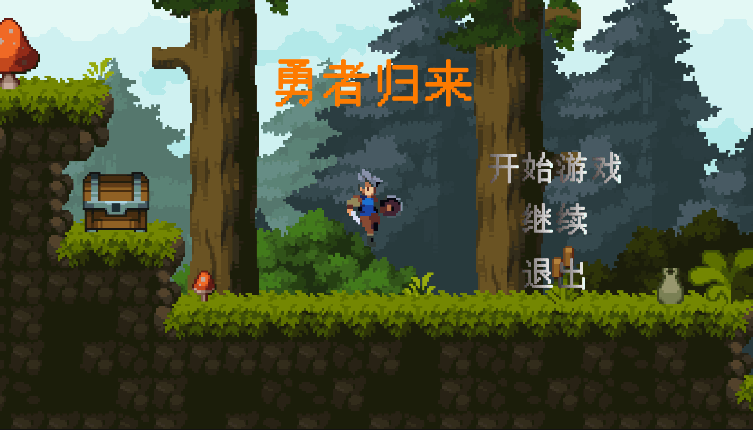
系列导航
文章目录
- 最终效果
- 系列导航
- 前言
- 存储点
- 灯光
- 后处理
- 存储位置信息
- 存储更多数据
- 存储场景信息
- 持久化存储数据
- 引入Unity 的可序列化字典类
- 调用
- 游戏结束
- 源码
- 完结
前言
欢迎来到【制作100个Unity游戏】系列!本系列将引导您一步步学习如何使用Unity开发各种类型的游戏。在这第26篇中,我们将探索如何用unity制作一个unity2d横版卷轴动作类游戏,我会附带项目源码,以便你更好理解它。
本节主要实现灯光 后处理 存储和持久化存储
存储点
存储点的实现和宝箱类似
新增SavePoint
public class SavePoint : MonoBehaviour, IInteractable {
private SpriteRenderer spriteRenderer;
public Sprite darkSprite;
public Sprite lightSprite;
public bool isDone;
private void Awake() {
spriteRenderer = GetComponent<SpriteRenderer>();
}
private void OnEnable() {
spriteRenderer.sprite = isDone ? lightSprite : darkSprite;
}
public void TriggerAction()
{
if(!isDone){
spriteRenderer.sprite = lightSprite;
GetComponent<Collider2D>().enabled = false;
isDone = true;
Save();
}
}
//存储数据
private void Save(){
Debug.Log("存储数据");
}
}
配置

效果
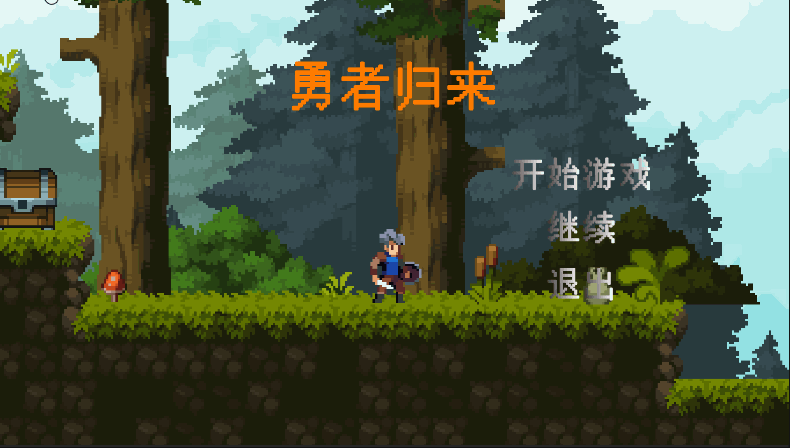
灯光
具体可以查看文章:【实现100个unity特效之6】Unity2d光源的使用
调低全局灯光

石头添加点灯光

效果
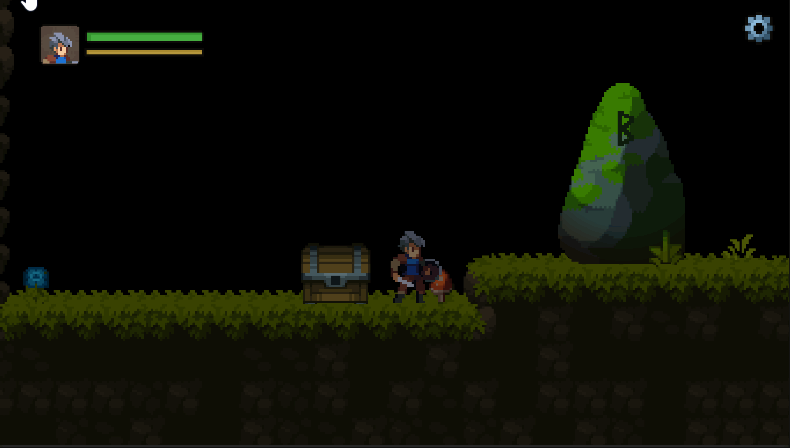
后处理
后处理效果,我之前也做过不少,感兴趣的可以回头去看看
【用unity实现100个游戏之14】Unity2d做一个建造与防御类rts游戏
unity实战】3D水系统,游泳,潜水,钓鱼功能实现
为了方便测试,记得勾选显示后处理效果,默认都是勾选的
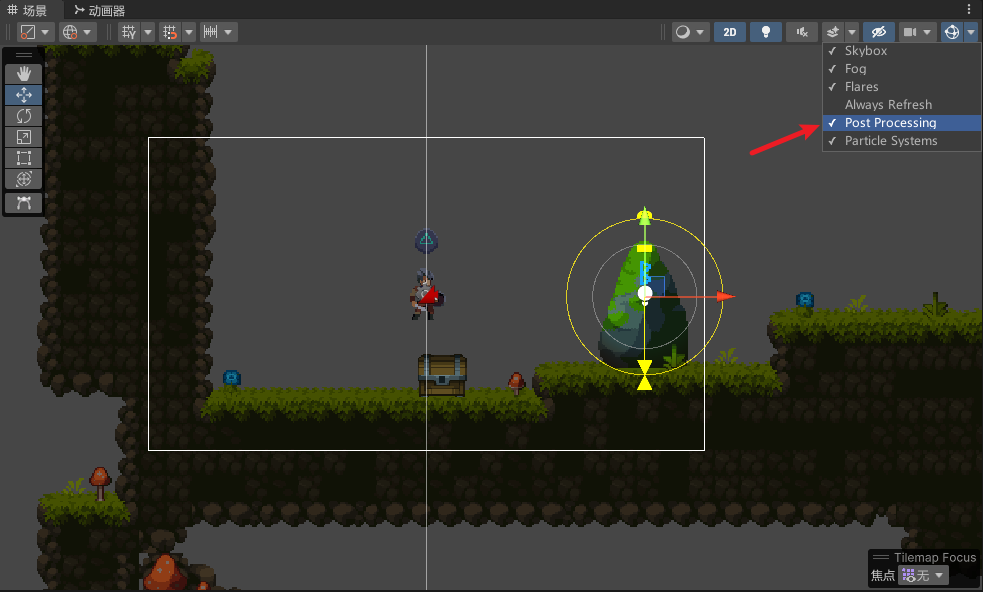
主相机勾选渲染后处理
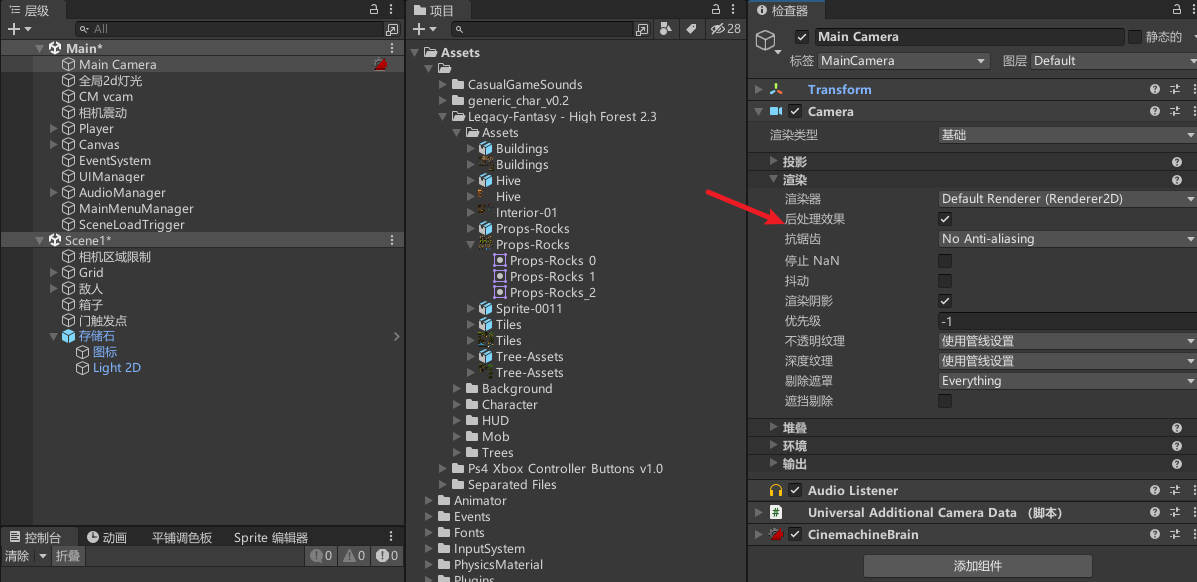
添加一些简单的后处理效果
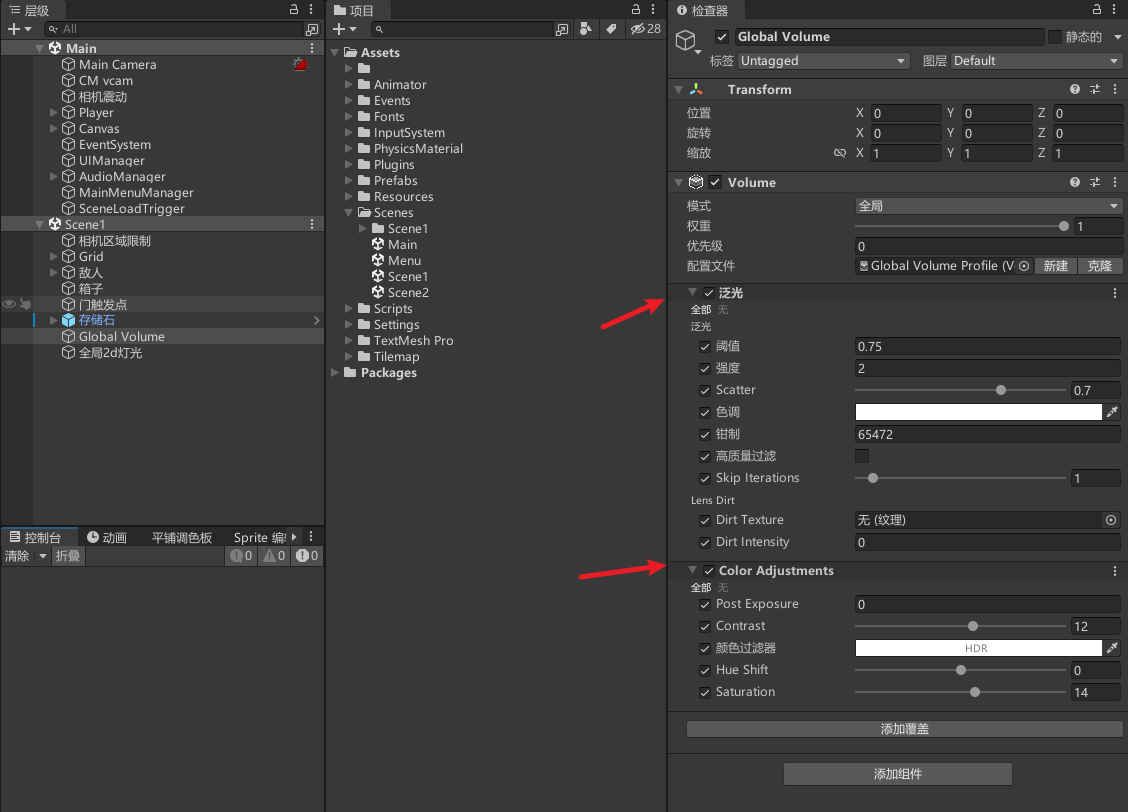
实现上面区域比下面区域亮
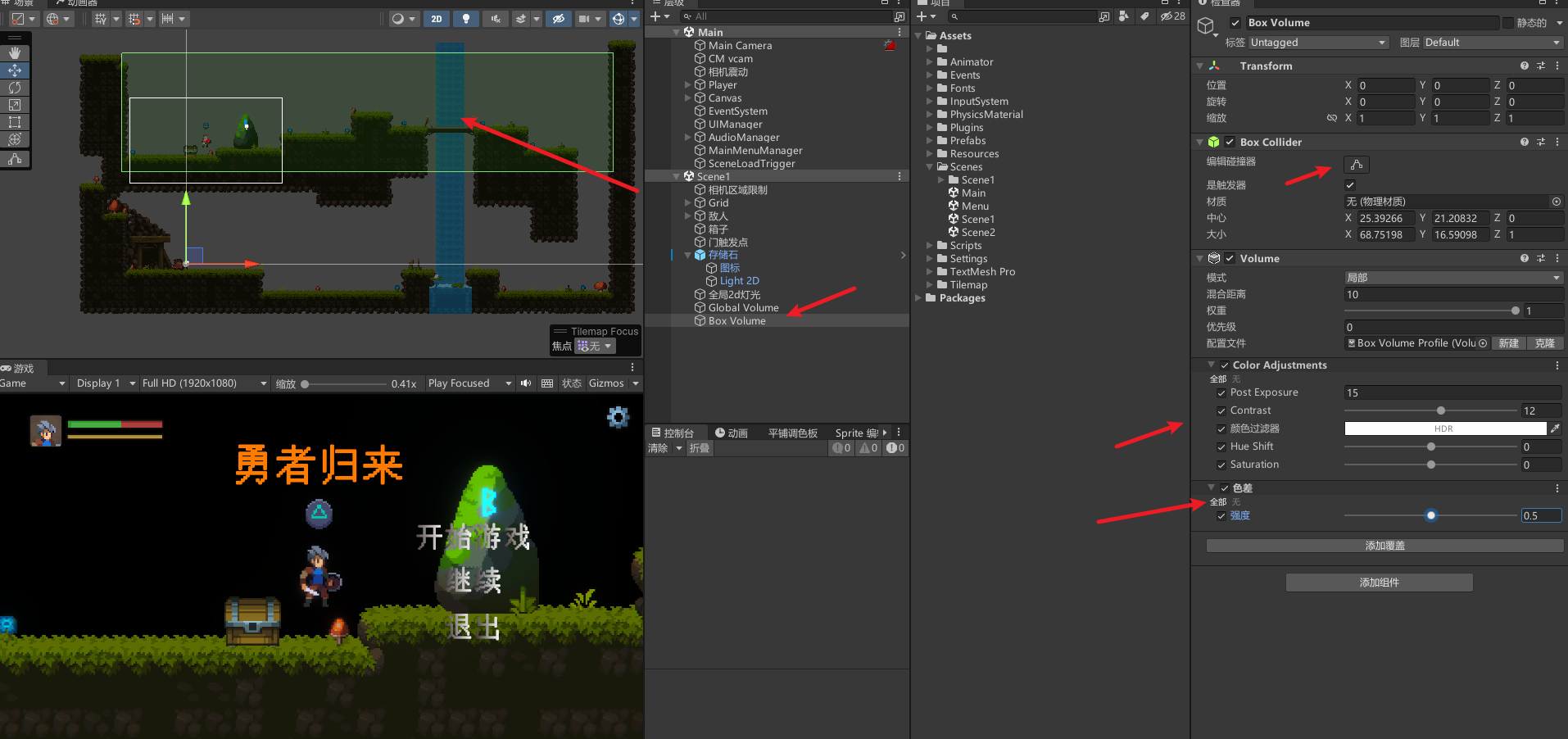
效果
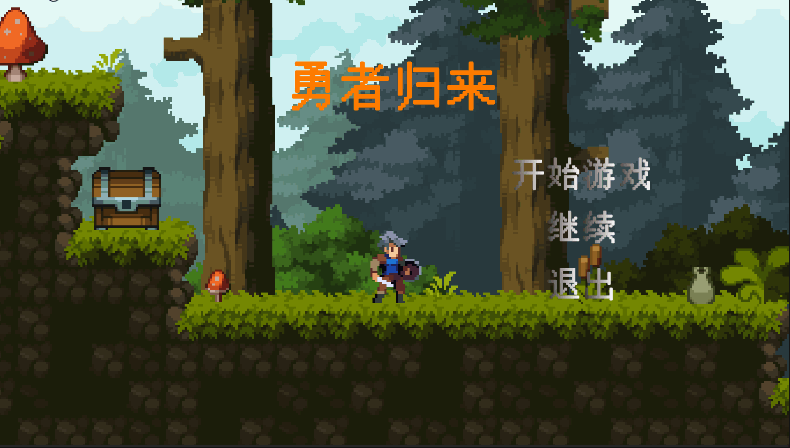
存储位置信息
新增Data
public class Data
{
/// <summary>
/// 存储角色位置信息的字典,键为角色名称,值为对应的位置坐标(Vector3)。
/// </summary>
public Dictionary<string, Vector3> characterPosDict = new Dictionary<string, Vector3>();
}
新增DataManager,为了保证Data Manager可以优先其他代码执行,为它添加特性[DefaultExecutionOrder(-100)]。很多小伙伴没有留意后面会提到的这个内容,发现有ISaveable的注册报错。[DefaultExecutionOrder(-100)] 是 Unity 中的一个属性,用于指定脚本的默认执行顺序。参数 -100 表示该脚本的执行顺序优先级,数值越小,优先级越高,即越先执行。
新输入系统获取键盘的输入,按下L按键读取一下进度。
using System.Collections.Generic;
using UnityEngine;
using UnityEngine.InputSystem;
//指定脚本的默认执行顺序,数值越小,优先级越高
[DefaultExecutionOrder(-100)]
public class DataManager : MonoBehaviour
{
public static DataManager instance;
[Header("事件监听")]
public VoidEventSO saveDataEvent; // 保存数据事件
/// <summary>
/// 存储需要保存数据的 ISaveable 实例的列表。
/// </summary>
private List<ISaveable> saveableList = new List<ISaveable>();
/// <summary>
/// 保存数据到 Data 对象中。
/// </summary>
private Data saveData;
private void Awake()
{
if (instance == null)
{
instance = this;
}
else
{
Destroy(gameObject);
}
saveData = new Data();
}
private void Update()
{
// 按L 加载测试
if(Keyboard.current.lKey.wasPressedThisFrame){
Debug.Log("加载");
Load();
}
}
/// <summary>
/// 注册需要保存数据的 ISaveable 实例。
/// </summary>
/// <param name="saveable">需要保存数据的 ISaveable 实例。</param>
public void RegisterSaveData(ISaveable saveable)
{
if (!saveableList.Contains(saveable))
{
saveableList.Add(saveable);
}
}
public void UnRegisterSaveData(ISaveable saveable){
if (saveableList.Contains(saveable))
{
// 如果在,就从列表中移除
saveableList.Remove(saveable);
}
}
private void OnEnable()
{
saveDataEvent.OnEventRaised += Save; // 监听保存数据事件
}
private void OnDisable()
{
saveDataEvent.OnEventRaised -= Save; // 取消监听保存数据事件
}
/// <summary>
/// 保存数据。
/// </summary>
public void Save()
{
foreach (var saveable in saveableList)
{
saveable.GetSaveData(saveData);
}
}
/// <summary>
/// 加载数据并应用到相应的 ISaveable 实例中。
/// </summary>
public void Load()
{
foreach (var saveable in saveableList)
{
saveable.LoadData(saveData);
}
}
}
挂载配置
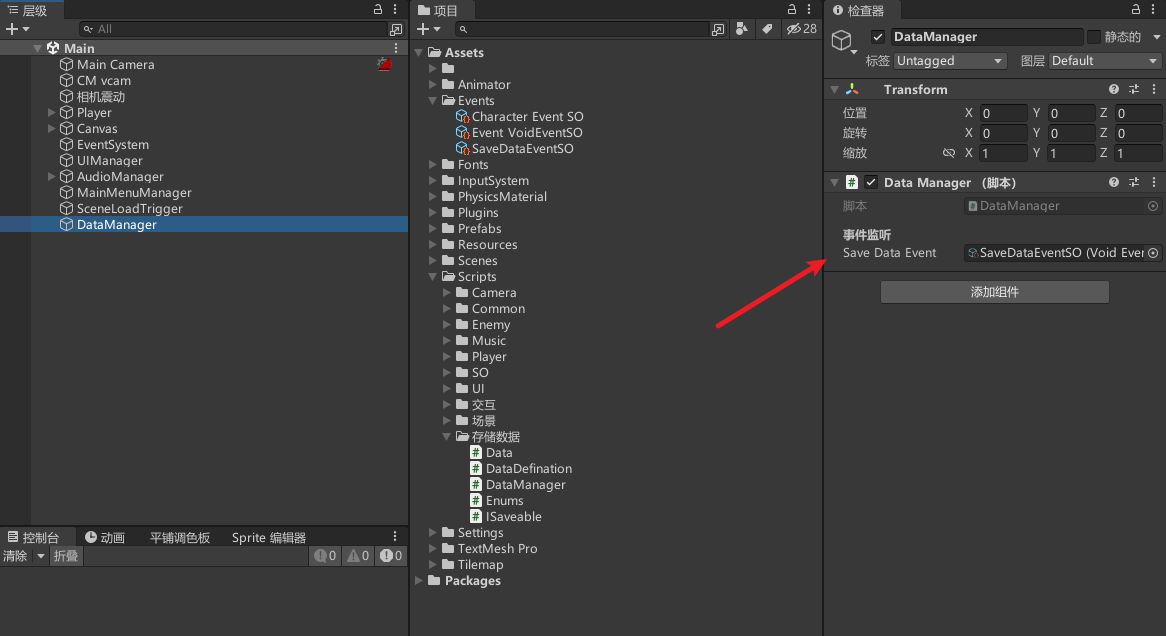
新增接口ISaveable
public interface ISaveable
{
DataDefination GetDataID();
/// <summary>
/// 将该实例注册到数据管理器以便保存数据。
/// </summary>
void RegisterSaveData() => DataManager.instance.RegisterSaveData(this);
/// <summary>
/// 将该实例从数据管理器中注销,停止保存数据。
/// </summary>
void UnRegisterSaveData() => DataManager.instance.UnRegisterSaveData(this);
/// <summary>
/// 获取需要保存的数据并存储到指定的 Data 对象中。
/// </summary>
/// <param name="data">保存数据的 Data 对象。</param>
void GetSaveData(Data data);
/// <summary>
/// 从指定的 Data 对象中加载数据并应用到该实例中。
/// </summary>
/// <param name="data">包含加载数据的 Data 对象。</param>
void LoadData(Data data);
}
那么如果有三个野猪的名字完全一样,我们怎么区分每一只野猪具体存储的位置呢,所以接下来我们要创建一个唯一的标识,我们可以直接使用c#为我们设置好的全局唯一标识符,GUID就是个16位的串码,保证它的唯一性

新增枚举
/// <summary>
/// 指示数据定义的持久化类型。
/// </summary>
public enum PersistentType
{
/// <summary>
/// 可读写的持久化类型,数据会被持久化保存。
/// </summary>
ReadWrite,
/// <summary>
/// 不持久化类型,数据不会被持久化保存。
/// </summary>
DoNotPerst
}
新增DataDefination
public class DataDefination : MonoBehaviour
{
/// <summary>
/// 持久化类型,指示数据定义的持久化方式。
/// </summary>
public PersistentType persistentType;
/// <summary>
/// 数据定义的唯一标识符。
/// </summary>
public string ID;
/// <summary>
/// 当编辑器中的属性值发生更改时调用,用于自动设置默认的ID值。
/// </summary>
private void OnValidate()
{
if (persistentType == PersistentType.ReadWrite)
{
if (ID == string.Empty)
{
ID = System.Guid.NewGuid().ToString();
}
}
else
{
ID = string.Empty;
}
}
}
配置挂载脚本,比如我们放在人物身上,生成唯一的UID
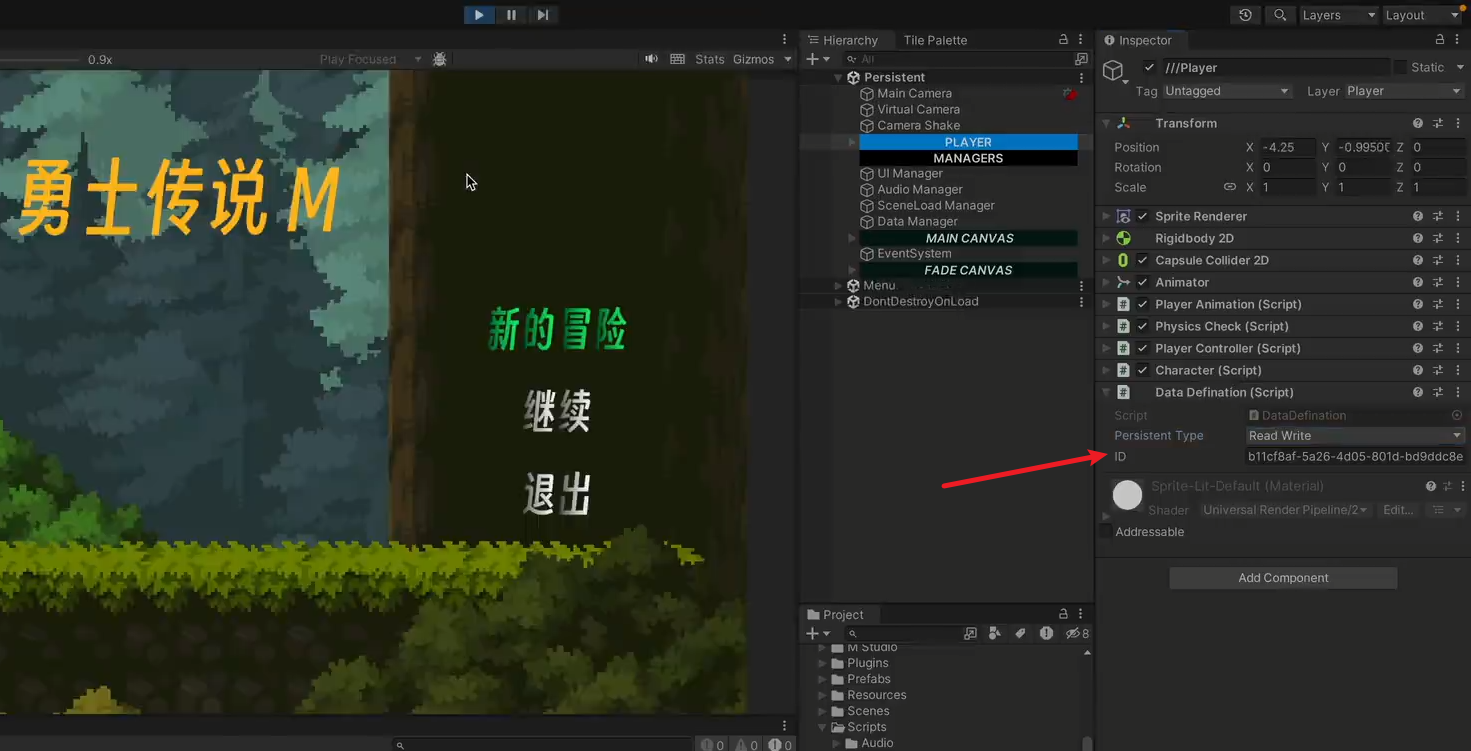
修改PlayerController,调用接口
public class PlayerController : MonoBehaviour, ISaveable
{
//...
private void OnEnable()
{
ISaveable saveable = this;
saveable.RegisterSaveData();
}
private void OnDisable()
{
ISaveable saveable = this;
saveable.UnRegisterSaveData();
}
// 获取数据ID,用于唯一标识当前对象的位置信息
public DataDefination GetDataID()
{
return GetComponent<DataDefination>();
}
// 将对象的位置信息保存到数据中
public void GetSaveData(Data data)
{
// 检查数据中是否已经存在当前对象的位置信息
if (data.characterPosDict.ContainsKey(GetDataID().ID))
{
// 如果已经存在,则更新位置信息
data.characterPosDict[GetDataID().ID] = transform.position;
}
else
{
// 如果不存在,则添加新的位置信息
data.characterPosDict.Add(GetDataID().ID, transform.position);
}
}
// 从数据中加载对象的位置信息
public void LoadData(Data data)
{
// 检查数据中是否存在当前对象的位置信息
if (data.characterPosDict.ContainsKey(GetDataID().ID))
{
// 如果存在,则将位置信息设置为对应的数值
transform.position = data.characterPosDict[GetDataID().ID];
}
}
}
修改SavePoint,调用存储数据
public class SavePoint : MonoBehaviour, IInteractable {
private SpriteRenderer spriteRenderer;
public Sprite darkSprite;
public Sprite lightSprite;
public bool isDone;
public VoidEventSO saveDataEvent; // 保存数据事件
private void Awake() {
spriteRenderer = GetComponent<SpriteRenderer>();
}
private void OnEnable() {
spriteRenderer.sprite = isDone ? lightSprite : darkSprite;
}
public void TriggerAction()
{
if(!isDone){
Save();
spriteRenderer.sprite = lightSprite;
GetComponent<Collider2D>().enabled = false;
isDone = true;
}
}
//存储数据
private void Save(){
Debug.Log("存储数据");
saveDataEvent.RaiseEvent();
}
}
效果,按L测试读取数据,角色回到存储的位置
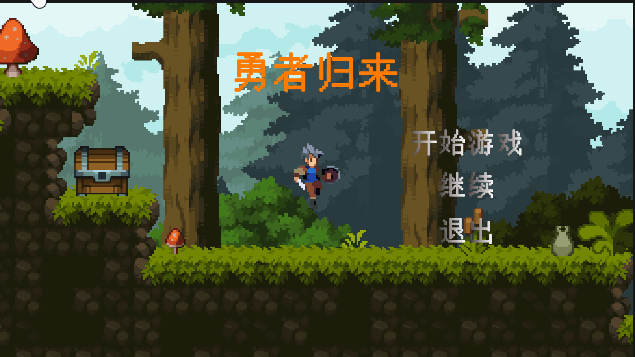
存储更多数据
修改Data,定义通用的float的类型,所有和float相关的类型都可用它保存
public class Data
{
//...
public Dictionary<string, float> floatSaveData = new Dictionary<string, float>();
}
但是如何区分是人物的血条还是能量呢?我们可以加入不同的后缀,修改PlayerController
// 将对象的位置信息保存到数据中
public void GetSaveData(Data data)
{
// 检查数据中是否已经存在当前对象的位置信息
if (data.characterPosDict.ContainsKey(GetDataID().ID))
{
// 如果已经存在,则更新位置信息
data.characterPosDict[GetDataID().ID] = transform.position;
data.floatSaveData[GetDataID().ID + "Health"] = GetComponent<Character>().currentHealth;
data.floatSaveData[GetDataID().ID + "Power"] = GetComponent<Character>().currentPower;
}
else
{
// 如果不存在,则添加新的位置信息
data.characterPosDict.Add(GetDataID().ID, transform.position);
//存储玩家血量和能量
data.floatSaveData.Add(GetDataID().ID + "Health", GetComponent<Character>().currentHealth);
data.floatSaveData.Add(GetDataID().ID + "Power", GetComponent<Character>().currentPower);
}
}
// 从数据中加载对象的位置信息
public void LoadData(Data data)
{
// 检查数据中是否存在当前对象的位置信息
if (data.characterPosDict.ContainsKey(GetDataID().ID))
{
// 如果存在,则将位置信息设置为对应的数值
transform.position = data.characterPosDict[GetDataID().ID];
GetComponent<Character>().currentHealth = data.floatSaveData[GetDataID().ID + "Health"];
GetComponent<Character>().currentPower = data.floatSaveData[GetDataID().ID + "Power"];
//更新血条能量UI
GetComponent<Character>().OnHealthChanged?.Invoke(GetComponent<Character>());
}
}
效果
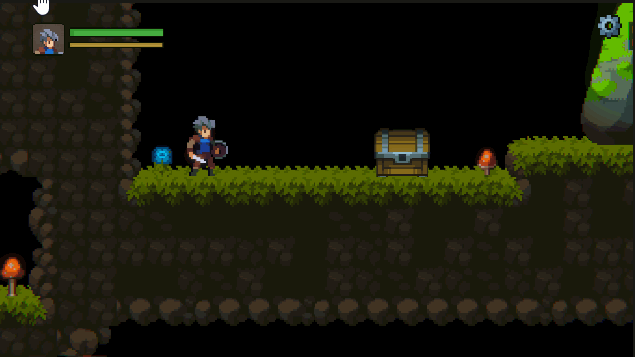
同理你可以存储其他的比如宝箱,野猪等信息
存储场景信息
修改Data,将场景信息转为json数据进行存取
public string sceneToSave;
public void SaveGameScene(SceneField savedScene){
sceneToSave = JsonUtility.ToJson(savedScene);
}
public SceneField GetSavedScene(){
SceneField loadedData = JsonUtility.FromJson<SceneField>(sceneToSave);
return loadedData;
}
修改SavePoint,存储场景信息
public SceneField currentLoadedScene;
public class SavePoint : MonoBehaviour, IInteractable, ISaveable
{
//...
public DataDefination GetDataID()
{
return null;
}
public void GetSaveData(Data data)
{
data.SaveGameScene(currentLoadedScene);//存储场景
}
public void LoadData(Data data)
{
}
}
配置当前场景
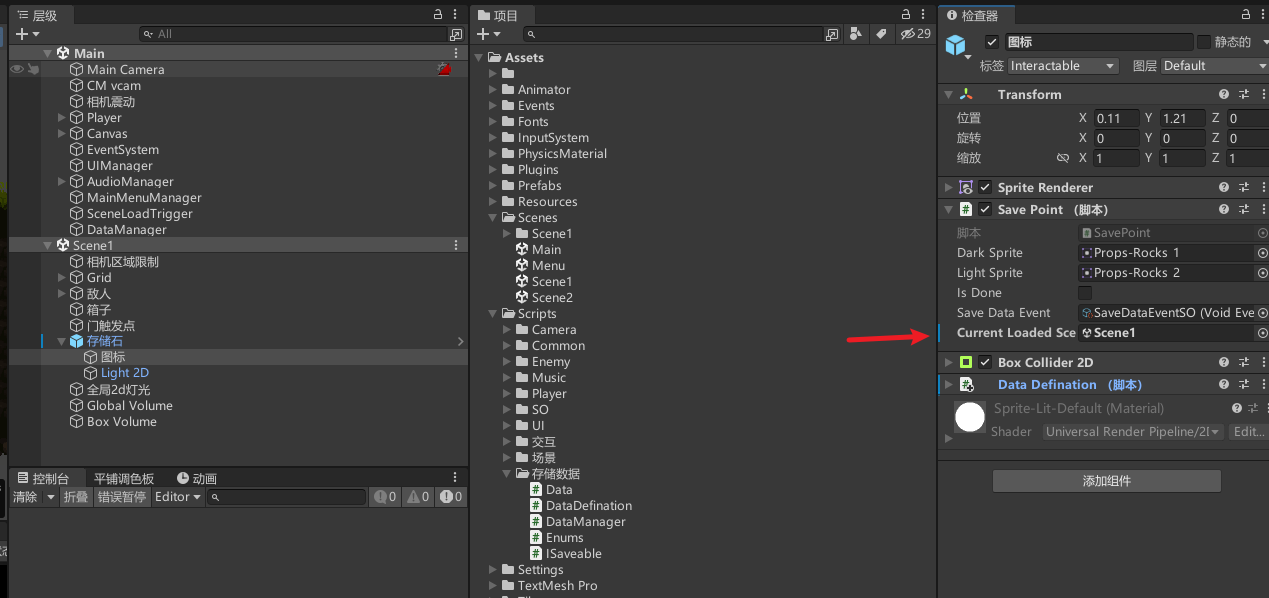
修改DataManager,我们希望加载存储场景完成后,再进行其他的LoadData操作,所以加载存储场景的操作我们就不放在LoadData里执行了。可以加入场景过渡渐变,让效果更好,这里我就不加了
/// <summary>
/// 加载数据并应用到相应的 ISaveable 实例中。
/// </summary>
public void Load()
{
//获取存储的场景
var scence = saveData.GetSavedScene();
if (scence != null)
{
// 获取当前活动的场景
Scene activeScene = SceneManager.GetActiveScene();
// 获取所有加载的场景
for (int i = 0; i < SceneManager.sceneCount; i++)
{
Scene loadedScene = SceneManager.GetSceneAt(i);
Debug.Log("Loaded Scene " + i + ": " + loadedScene.name);
if (activeScene.name != loadedScene.name) SceneManager.UnloadSceneAsync(loadedScene.name); // 异步卸载所有非主场景
}
//加载scence场景
SceneManager.LoadSceneAsync(scence.SceneName, LoadSceneMode.Additive).completed += operation =>
{
if (operation.isDone)
{
//获取相机边界方法
cameraControl.GetNewCameraBounds();
//加载其他数据
foreach (var saveable in saveableList)
{
saveable.LoadData(saveData);
}
}
};
//控制按钮的显示隐藏
sceneLoadTrigger.StartMenu();
}
}
效果
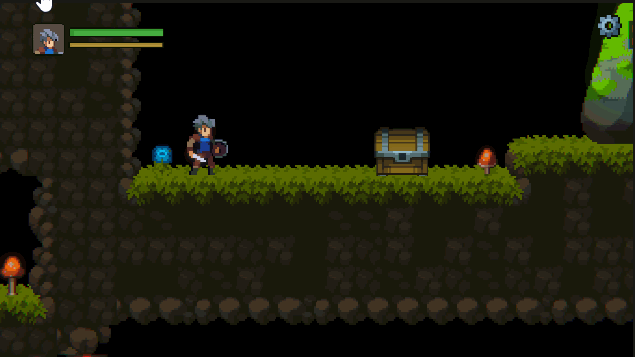
持久化存储数据
具体可以看我这篇文章:【unity小技巧】Unity存储存档保存——PlayerPrefs、JsonUtility和MySQL数据库的使用
需要注意的是,Dictionary 类型不能直接序列化为 JSON 字符串,因为 JsonUtility.ToJson() 方法只能序列化 Unity 引擎内置支持的类型。解决这个问题的一种方法是创建一个自定义类。其实我在之前的文章早就有用到这种方法:【用unity实现100个游戏之12】unity制作一个俯视角2DRPG《类星露谷物语、浮岛物语》资源收集游戏(附项目源码)
引入Unity 的可序列化字典类
Unity 无法序列化标准词典。这意味着它们不会在检查器中显示或编辑,
也不会在启动时实例化。一个经典的解决方法是将键和值存储在单独的数组中,并在启动时构造字典。
我们使用gitthub大佬的源码即可,此项目提供了一个通用字典类及其自定义属性抽屉来解决此问题。
源码地址:https://github.com/azixMcAze/Unity-SerializableDictionary
你可以选择下载源码,也可以直接复制我下面的代码,我把主要代码提出来了
SerializableDictionary.cs
using System;
using System.Collections;
using System.Collections.Generic;
using System.Runtime.Serialization;
using UnityEngine;
public abstract class SerializableDictionaryBase
{
public abstract class Storage {}
protected class Dictionary<TKey, TValue> : System.Collections.Generic.Dictionary<TKey, TValue>
{
public Dictionary() {}
public Dictionary(IDictionary<TKey, TValue> dict) : base(dict) {}
public Dictionary(SerializationInfo info, StreamingContext context) : base(info, context) {}
}
}
[Serializable]
public abstract class SerializableDictionaryBase<TKey, TValue, TValueStorage> : SerializableDictionaryBase, IDictionary<TKey, TValue>, IDictionary, ISerializationCallbackReceiver, IDeserializationCallback, ISerializable
{
Dictionary<TKey, TValue> m_dict;
[SerializeField]
TKey[] m_keys;
[SerializeField]
TValueStorage[] m_values;
public SerializableDictionaryBase()
{
m_dict = new Dictionary<TKey, TValue>();
}
public SerializableDictionaryBase(IDictionary<TKey, TValue> dict)
{
m_dict = new Dictionary<TKey, TValue>(dict);
}
protected abstract void SetValue(TValueStorage[] storage, int i, TValue value);
protected abstract TValue GetValue(TValueStorage[] storage, int i);
public void CopyFrom(IDictionary<TKey, TValue> dict)
{
m_dict.Clear();
foreach (var kvp in dict)
{
m_dict[kvp.Key] = kvp.Value;
}
}
public void OnAfterDeserialize()
{
if(m_keys != null && m_values != null && m_keys.Length == m_values.Length)
{
m_dict.Clear();
int n = m_keys.Length;
for(int i = 0; i < n; ++i)
{
m_dict[m_keys[i]] = GetValue(m_values, i);
}
m_keys = null;
m_values = null;
}
}
public void OnBeforeSerialize()
{
int n = m_dict.Count;
m_keys = new TKey[n];
m_values = new TValueStorage[n];
int i = 0;
foreach(var kvp in m_dict)
{
m_keys[i] = kvp.Key;
SetValue(m_values, i, kvp.Value);
++i;
}
}
#region IDictionary<TKey, TValue>
public ICollection<TKey> Keys { get { return ((IDictionary<TKey, TValue>)m_dict).Keys; } }
public ICollection<TValue> Values { get { return ((IDictionary<TKey, TValue>)m_dict).Values; } }
public int Count { get { return ((IDictionary<TKey, TValue>)m_dict).Count; } }
public bool IsReadOnly { get { return ((IDictionary<TKey, TValue>)m_dict).IsReadOnly; } }
public TValue this[TKey key]
{
get { return ((IDictionary<TKey, TValue>)m_dict)[key]; }
set { ((IDictionary<TKey, TValue>)m_dict)[key] = value; }
}
public void Add(TKey key, TValue value)
{
((IDictionary<TKey, TValue>)m_dict).Add(key, value);
}
public bool ContainsKey(TKey key)
{
return ((IDictionary<TKey, TValue>)m_dict).ContainsKey(key);
}
public bool Remove(TKey key)
{
return ((IDictionary<TKey, TValue>)m_dict).Remove(key);
}
public bool TryGetValue(TKey key, out TValue value)
{
return ((IDictionary<TKey, TValue>)m_dict).TryGetValue(key, out value);
}
public void Add(KeyValuePair<TKey, TValue> item)
{
((IDictionary<TKey, TValue>)m_dict).Add(item);
}
public void Clear()
{
((IDictionary<TKey, TValue>)m_dict).Clear();
}
public bool Contains(KeyValuePair<TKey, TValue> item)
{
return ((IDictionary<TKey, TValue>)m_dict).Contains(item);
}
public void CopyTo(KeyValuePair<TKey, TValue>[] array, int arrayIndex)
{
((IDictionary<TKey, TValue>)m_dict).CopyTo(array, arrayIndex);
}
public bool Remove(KeyValuePair<TKey, TValue> item)
{
return ((IDictionary<TKey, TValue>)m_dict).Remove(item);
}
public IEnumerator<KeyValuePair<TKey, TValue>> GetEnumerator()
{
return ((IDictionary<TKey, TValue>)m_dict).GetEnumerator();
}
IEnumerator IEnumerable.GetEnumerator()
{
return ((IDictionary<TKey, TValue>)m_dict).GetEnumerator();
}
#endregion
#region IDictionary
public bool IsFixedSize { get { return ((IDictionary)m_dict).IsFixedSize; } }
ICollection IDictionary.Keys { get { return ((IDictionary)m_dict).Keys; } }
ICollection IDictionary.Values { get { return ((IDictionary)m_dict).Values; } }
public bool IsSynchronized { get { return ((IDictionary)m_dict).IsSynchronized; } }
public object SyncRoot { get { return ((IDictionary)m_dict).SyncRoot; } }
public object this[object key]
{
get { return ((IDictionary)m_dict)[key]; }
set { ((IDictionary)m_dict)[key] = value; }
}
public void Add(object key, object value)
{
((IDictionary)m_dict).Add(key, value);
}
public bool Contains(object key)
{
return ((IDictionary)m_dict).Contains(key);
}
IDictionaryEnumerator IDictionary.GetEnumerator()
{
return ((IDictionary)m_dict).GetEnumerator();
}
public void Remove(object key)
{
((IDictionary)m_dict).Remove(key);
}
public void CopyTo(Array array, int index)
{
((IDictionary)m_dict).CopyTo(array, index);
}
#endregion
#region IDeserializationCallback
public void OnDeserialization(object sender)
{
((IDeserializationCallback)m_dict).OnDeserialization(sender);
}
#endregion
#region ISerializable
protected SerializableDictionaryBase(SerializationInfo info, StreamingContext context)
{
m_dict = new Dictionary<TKey, TValue>(info, context);
}
public void GetObjectData(SerializationInfo info, StreamingContext context)
{
((ISerializable)m_dict).GetObjectData(info, context);
}
#endregion
}
public static class SerializableDictionary
{
public class Storage<T> : SerializableDictionaryBase.Storage
{
public T data;
}
}
[Serializable]
public class SerializableDictionary<TKey, TValue> : SerializableDictionaryBase<TKey, TValue, TValue>
{
public SerializableDictionary() {}
public SerializableDictionary(IDictionary<TKey, TValue> dict) : base(dict) {}
protected SerializableDictionary(SerializationInfo info, StreamingContext context) : base(info, context) {}
protected override TValue GetValue(TValue[] storage, int i)
{
return storage[i];
}
protected override void SetValue(TValue[] storage, int i, TValue value)
{
storage[i] = value;
}
}
[Serializable]
public class SerializableDictionary<TKey, TValue, TValueStorage> : SerializableDictionaryBase<TKey, TValue, TValueStorage> where TValueStorage : SerializableDictionary.Storage<TValue>, new()
{
public SerializableDictionary() {}
public SerializableDictionary(IDictionary<TKey, TValue> dict) : base(dict) {}
protected SerializableDictionary(SerializationInfo info, StreamingContext context) : base(info, context) {}
protected override TValue GetValue(TValueStorage[] storage, int i)
{
return storage[i].data;
}
protected override void SetValue(TValueStorage[] storage, int i, TValue value)
{
storage[i] = new TValueStorage();
storage[i].data = value;
}
}
调用
修改Data,Dictionary 全部改为SerializableDictionary
public class Data
{
/// <summary>
/// 存储角色位置信息的字典,键为角色名称,值为对应的位置坐标(Vector3)。
/// </summary>
public SerializableDictionary <string, Vector3> characterPosDict = new SerializableDictionary <string, Vector3>();
public SerializableDictionary <string, float> floatSaveData = new SerializableDictionary <string, float>();
public SerializableDictionary <string, bool> boolSaveData = new SerializableDictionary <string, bool>();
public string sceneToSave;
public void SaveGameScene(SceneField savedScene){
sceneToSave = JsonUtility.ToJson(savedScene);
}
public SceneField GetSavedScene(){
SceneField loadedData = JsonUtility.FromJson<SceneField>(sceneToSave);
return loadedData;
}
}
修改DataManager
String savePath = "test.json";
/// <summary>
/// 保存数据。
/// </summary>
public void Save()
{
//。。。
//持久化存储数据
String jsonData = JsonUtility.ToJson(saveData);
File.WriteAllText(savePath, jsonData);
}
/// <summary>
/// 加载数据并应用到相应的 ISaveable 实例中。
/// </summary>
public void Load()
{
//读取数据
string jsonData = File.ReadAllText(savePath);
//将JSON数据反序列化为游戏数据对象
Data saveData = JsonUtility.FromJson<Data>(jsonData);
//。。。
}
查看存储的test.json数据

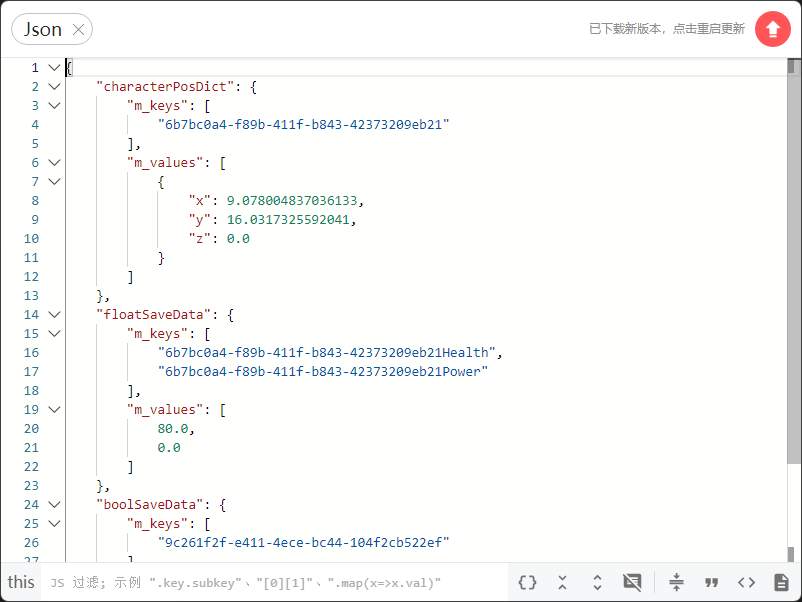
效果
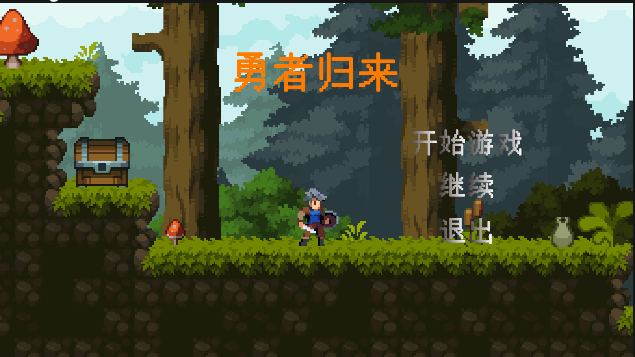
游戏结束
比如触碰水死亡,我们直接加个Attack脚本就可以了,把伤害设置很高

人物死亡,返回菜单,修改PlayerController
//死亡
public void PlayerDead()
{
AudioManager.Instance.PlaySFX("人物死亡");
isDead = true;
inputControl.Player.Disable();
//多少秒后重新加载场景
Invoke("RestartGame", 1.5f);
}
//重新开始
public void RestartGame()
{
SceneManager.LoadScene(SceneManager.GetActiveScene().name);
}
效果
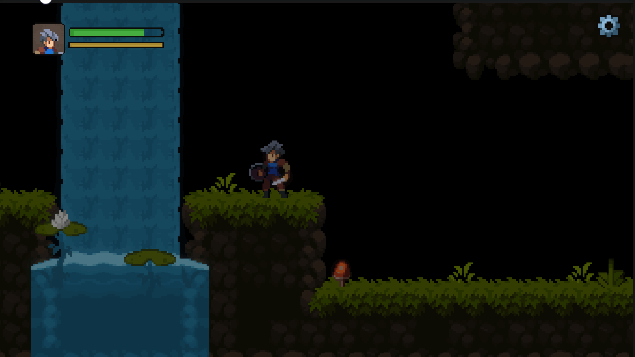
源码
源码不出意外的话我会放在最后一节
完结
赠人玫瑰,手有余香!如果文章内容对你有所帮助,请不要吝啬你的点赞评论和关注,以便我第一时间收到反馈,你的每一次支持都是我不断创作的最大动力。当然如果你发现了文章中存在错误或者有更好的解决方法,也欢迎评论私信告诉我哦!
好了,我是向宇,https://xiangyu.blog.csdn.net
一位在小公司默默奋斗的开发者,出于兴趣爱好,最近开始自学unity,闲暇之余,边学习边记录分享,站在巨人的肩膀上,通过学习前辈们的经验总是会给我很多帮助和启发!php是工作,unity是生活!如果你遇到任何问题,也欢迎你评论私信找我, 虽然有些问题我也不一定会,但是我会查阅各方资料,争取给出最好的建议,希望可以帮助更多想学编程的人,共勉~



